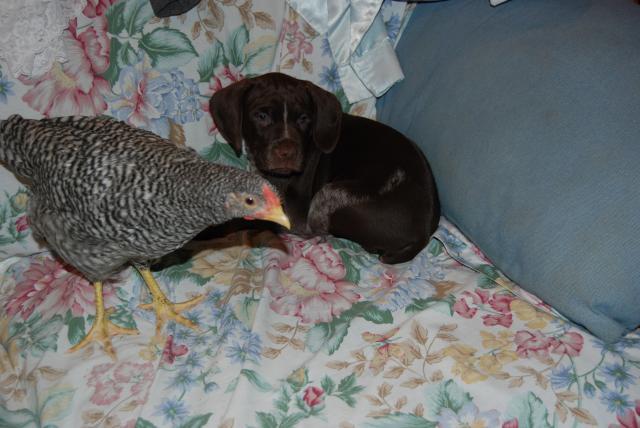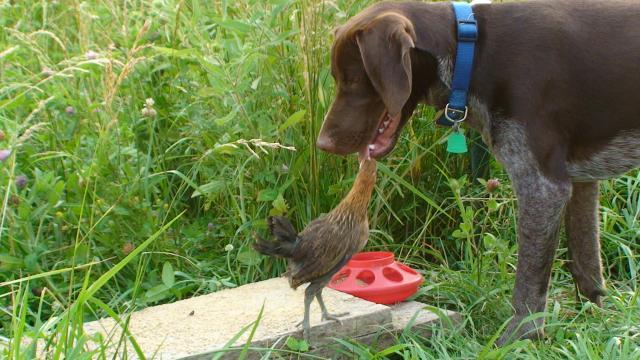Today I acquired my first livestock guarding dog to be. He is a German shorthair, bred to be a bird dog and supposedly a representative of one of the more mentally sound and capable dog breeds. My wife is partial to breed and was able to promote it owing to its reputation as guard dog for property. Still challenges expected, especially in respect to roaming which will likely manifest when pup reaches adulthood. Short coat will be a concern when weather cold but awesome when hot. He will be small enough to keep feed bills down yet big enough to at least standoff a local coyote. Roughly 2 years from now a female will be acquired. When she reaches adulthood, coyote(s) will not be a problem.
Below is Scooby (right) at six weeks of age and Dooby is the 1/3 grown dominique male (left). Dooby and his sisters will be expected to sleep in doghouse with Scooby once he is big enough to tolerate cold. Until then interactions between pup and birds only during day. This imprinting time and Scooby must be socialized with our stock and possibly with some to be acquired in future (sheep and goats). Scooby comes from family that crosses fences very well which is needed if he is to pursue villans too and through fenced paddocks set to keep small ruminants. Poultry will not be constrained by fencing excepting in breeding paddock.

Below is Scooby (right) at six weeks of age and Dooby is the 1/3 grown dominique male (left). Dooby and his sisters will be expected to sleep in doghouse with Scooby once he is big enough to tolerate cold. Until then interactions between pup and birds only during day. This imprinting time and Scooby must be socialized with our stock and possibly with some to be acquired in future (sheep and goats). Scooby comes from family that crosses fences very well which is needed if he is to pursue villans too and through fenced paddocks set to keep small ruminants. Poultry will not be constrained by fencing excepting in breeding paddock.

Last edited by a moderator:





